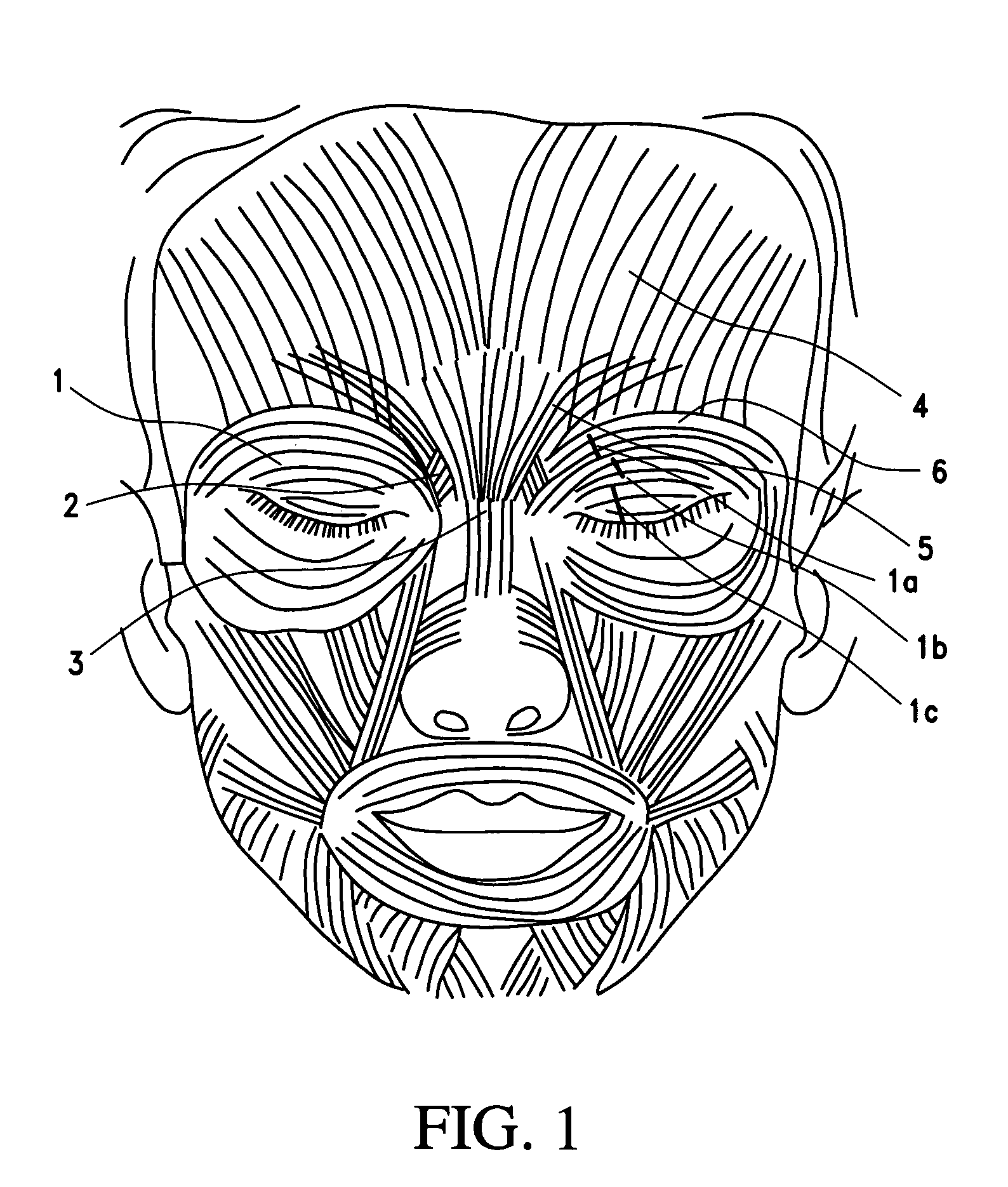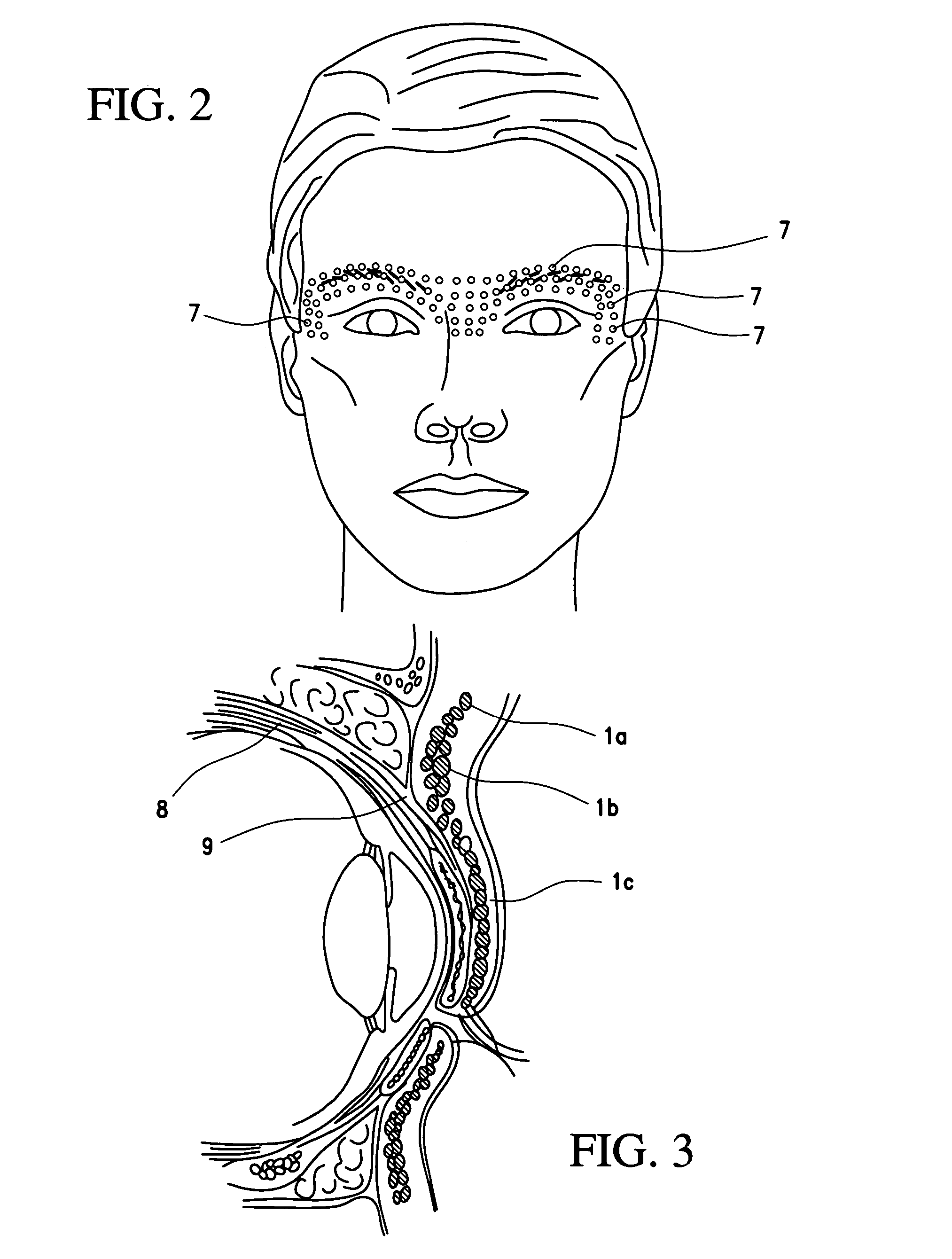Cosmetic use of botulinum toxin for the treatment of eyebrow and forehead ptosis, and unwanted eyebrow expression
a technology of botulinum toxin and ptosis of eyebrows, applied in the field of cosmetic use of neurotoxin agents, can solve the problems of limited technique, unsatisfactory eyes, small eyes, etc., and achieve the effects of reducing the risk of btx diffusion, selective weakening of the eyebrow depressor effect, and reducing the risk of ptosis of eyebrows
- Summary
- Abstract
- Description
- Claims
- Application Information
AI Technical Summary
Benefits of technology
Problems solved by technology
Method used
Image
Examples
Embodiment Construction
[0018]Botulinum toxin is a general term for any of the neurotoxins produced by any of the members the bacterial organisms that belong to the Clostridium botulinum species. Fourteen pathogenic strains of this species have been isolated from botulism outbreaks in humans and animals. These organisms have been shown to produce seven immunologically distinct types of neurotoxin (types A, B, C, D, E, F, and G). The term “BTX” is used to refer to this family of neurotoxins. Currently only botulinum toxin types A and B are commercially available for clinical use: Botulinum toxin A from Allergan Inc., Irvine, Calif., under the trade name BOTOX®, and from Ipsen Ltd., Slough, UK, under the trade name Dysport® and Reloxin®. Botulinum toxin B is available from Solstice Neurosciences, Inc, South San Francisco, Calif., under the trade name Myobloc®.
[0019] The treatment dose of BTX is measured in “Unit” equivalents, which is defined on the basis of a biological assay. One Unit equivalent is define...
PUM
| Property | Measurement | Unit |
|---|---|---|
| volumes | aaaaa | aaaaa |
| volumes | aaaaa | aaaaa |
| volume | aaaaa | aaaaa |
Abstract
Description
Claims
Application Information
 Login to View More
Login to View More - R&D
- Intellectual Property
- Life Sciences
- Materials
- Tech Scout
- Unparalleled Data Quality
- Higher Quality Content
- 60% Fewer Hallucinations
Browse by: Latest US Patents, China's latest patents, Technical Efficacy Thesaurus, Application Domain, Technology Topic, Popular Technical Reports.
© 2025 PatSnap. All rights reserved.Legal|Privacy policy|Modern Slavery Act Transparency Statement|Sitemap|About US| Contact US: help@patsnap.com


